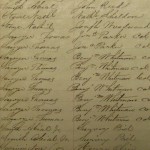When you go to the closing for your home (whether buying or selling), you will receive a closing statement that outlines the various costs and charges, who pays for them, and the bottom line for you – either money you’re walking away with or money you’ll need to bring with you. These closing statements (formerly called the HUD-1) are typically sent to you by the title company a few days before closing so that you can review them and understand what the final outcome of the sale or purchase will be. Read that closing statement carefully. This past week, we saw a lot of mistakes and omissions on those statements that could have been costly for both parties. Your agent should review the documents, but there’s nothing like reviewing them for yourself. Ask questions and make sure you get the answers. There are a lot of different charges on those statements and you should understand what each one is, who it is being charged to, and why it is being charged.
Mistakes on the Closing Statement?
In reviewing your closing statement, look at each individual line item. Is it something you are aware of, something you agreed to in the contract, or a normal cost of doing business with a lender or title company? It should be. If there’s something that looks out of place – ask. Often, the lender charges and various fees generated by the act of closing on a property can be very confusing and the names of these fees can vary. If they’re lender charges – ask you lender. If they are title fees – ask the title company. Point is – ask. Talk to your real estate agent when you receive the copy of the closing statement. They should be able to help you understand the various numbers on there.
If there are mistakes, omissions, or additions that you weren’t aware of, it’s definitely time to ask some questions. We’ve seen incorrect amounts, double charges, charges for items paid outside of closing, charges that should never have been charged, amounts charged to one party that should be charged to the other, incorrect commissions amounts, dates wrong with prorations (which skew the numbers)…you name it, we’ve probably come across it once or twice. Typically, it just takes a quick call to the title company to have the issue corrected, but the quicker the issue is caught, the less chance it will cause any delays.
These mistakes are not nefarious in nature, so don’t panic. The closing statements are put together by people and like most things that require human involvement, there are chances that things will be missed or done incorrectly. Often, it’s a simple matter of data entry and can be corrected easily. Sometimes, it is an issue caused by contracts and the obligations set forth in them, which may take a little investigation to get corrected, but they will get corrected.
Like all things in real estate, the closing statement should be checked over and reviewed so that you know exactly what you’re signing. When you have questions, you should get answers. If not, it’s time to put a pause on the pace of things and work to get the answers you need. Do not sign anything that you do not fully comprehend or something you still have questions about. Your agent, lender, and closer will work to explain those items that you may not understand and correct any mistakes that may be present.
image courtesy of Silenceofnight
Related Posts






One of my friend wants to buy a house so he wants to contact a real estate agent to help him do so. Its helpful when you reminded to review your closing statement properly and to look into each individual item. Thanks for the tips on reviewing closing statements and I hope that my friend can find a good house for himself soon.